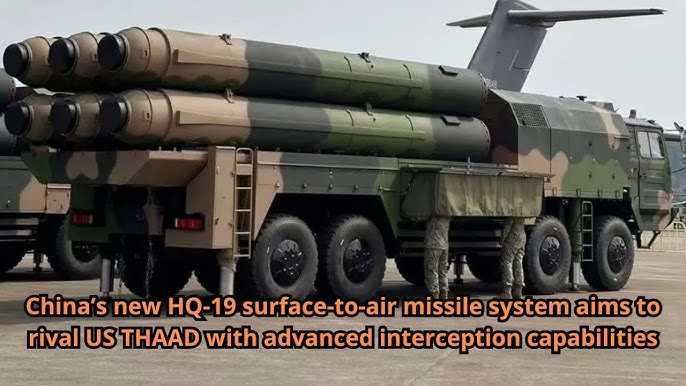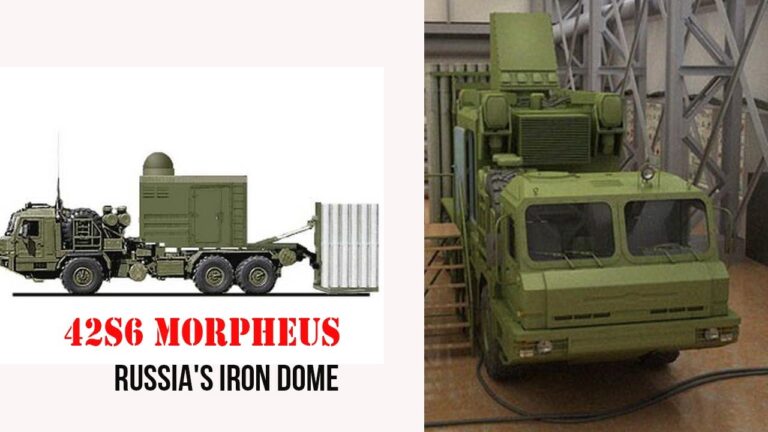
Introduction to China’s HQ-19 Missile Defense System
The Zhuhai Airshow publicly showcased China’s new HQ-19 surface-to-air missile system, revealing details about one of China’s advanced anti-ballistic platforms. As compared by defence experts to the U.S. THAAD-ER system, HQ-19 is designed to intercept ballistic missiles at extended ranges. The system has been operational with the People’s Liberation Army (PLA) for some time, and its appearance at the airshow underscores China’s advances in missile defence technology.
Capabilities of China’s New HQ-19 Surface-to-Air Missile System
The HQ-19 system features a six-missile launcher mounted on a high-mobility 8×8 platform, enabling greater manoeuvrability on the field. Its 610A information radar, a vital detection and targeting component, ensures precise interception capabilities.
The HQ-19’s kinetic kill warhead uses direct impact to destroy incoming threats, a method known for its effectiveness and precision in modern missile defence. This system is classified as a mid-course interceptor, a technology that targets missiles during the longest phase of their trajectory, allowing for multiple intercept opportunities.

Design and Features: Cold Launch System and High Mobility
A notable feature of China’s new HQ-19 surface-to-air missile system is its steep-angle cold launch system. This method launches missiles without igniting them directly from the launcher, reducing stress on the equipment and enhancing survivability in high-stakes combat.
The launcher vehicle is approximately 13 metres in length, with each missile canister extending up to 7.8 metres in height. These dimensions underscore HQ-19’s formidable presence and advanced engineering tailored for effective and resilient missile defence.
A Strategic Public Display of China’s Military Power
China showcased the HQ-19 at the Zhuhai Airshow to highlight its military strength. The move demonstrated progress in anti-ballistic defence technology. It aligned with other major reveals, including the J-35A stealth fighter’s expected debut.
A new armed reconnaissance drone also featured in the event. This public display aimed to show the world China’s defence capabilities. It came as tensions in the Indo-Pacific region continued to rise.
How China’s New HQ-19 Surface-to-Air Missile System Compares to THAAD
The HQ-19 is frequently positioned as China’s counterpart to the U.S. THAAD system. Reports suggest that HQ-19 can intercept missiles at distances ranging from 1,000 to 3,000 kilometres. Although specific details remain classified, HQ-19’s range could allow it to match THAAD’s capacity to track targets up to 3,000 kilometres in forward-based mode. Like THAAD, the HQ-19 likely employs “hit-to-kill” technology, where the interceptor destroys incoming missiles through direct impact, a hallmark of advanced missile defence systems.
Speculations on the HQ-19’s Mid-Course Interception Capabilities
A key strength of China’s new HQ-19 surface-to-air missile system lies in its mid-course interception capability. Intercepting missiles during the mid-course phase, which takes place in the upper atmosphere or near space, presents particular difficulties due to high speeds and variable atmospheric conditions.
The PLA successfully tested a ground-based mid-course missile interceptor in both June 2022 and April 2023, which raises speculation that the HQ-19 may have been the system that was tested. If true, these successful tests would establish HQ-19 as a robust component of China’s multilayer missile defence network.
China’s Expanding Anti-Ballistic Missile Defence System
China’s missile defence strategy relies on a multitiered approach to addressing potential missile threats. The HQ-19 functions as a middle-tier layer within this missile defence system, intercepting ballistic missiles before they descend to lower altitudes. Other Chinese defence technologies will complement this system, forming a comprehensive shield that can intercept various ballistic threats.
According to reports from the U.S. Department of Defence, China has been developing systems, such as HQ-19, for years to position itself against missile threats without relying on foreign technology. HQ-19, along with other systems, aims to boost China’s defence preparedness for potential conflicts, particularly with the United States.
The Zhuhai Airshow: Spotlight on China’s Military Innovations
China’s new HQ-19 surface-to-air missile system will be a major highlight at the Zhuhai Airshow from November 12 to 17. The PLA Air Force (PLAAF) will showcase a range of cutting-edge equipment, including the J-35A, a stealth fighter that will make China the second nation globally to operate two different fifth-generation jets.
Over 1,000 companies from 49 countries are expected to attend, adding to the airshow’s appeal as a platform for unveiling China’s latest military advancements.
PLA’s Aerial Demonstrations and the Participation of Global Defence Leaders
The PLAAF will perform aerial demonstrations, featuring 26 aircraft from seven classes, including the J-20 stealth fighter jet, the J-16 multirole fighter jet, and the YU-20A tanker aircraft. The airshow will also allow visitors to access the cargo area of the Y-20 transport aircraft through a lottery system.
Additionally, high-profile foreign aircraft, including Russia’s Su-57 stealth fighter and an An-124 large transport plane, have arrived to participate, marking the airshow as a hub of international military presence.

Global Reactions and Future Implications of the HQ-19 System
Experts around the world have recognised China’s new HQ-19 surface-to-air missile system and acknowledged its strategic significance. Military analysts anticipate that the HQ-19 system may position China as a key player in the international missile defence market. However, whether China will export HQ-19 remains unclear because the PLA may prioritise enhancing its capabilities over pursuing foreign sales.
According to PLA observer Rick Joe, the HQ-19 could outweigh the J-35A in significance, indicating the value placed on missile defence technology in China’s military priorities. HQ-19’s public display is also symbolic, signalling China’s readiness to defend against any regional missile threats, particularly in light of rising tensions with the United States in the Asia-Pacific region.
Could Pakistan Acquire China’s HQ-19 Missile System to Counter India?
As China publicly unveils the HQ-19 surface-to-air missile system, Pakistan, which is a close ally of China, may express interest in acquiring this advanced anti-ballistic technology. Given their robust defence ties, it’s plausible that China might offer HQ-19 to boost Pakistan’s regional defence capabilities.
Equipped with kinetic kill technology designed to intercept ballistic threats, the HQ-19 could significantly enhance Pakistan’s deterrence against India’s missile capabilities, potentially shifting the balance of power in South Asia. If Pakistan acquires HQ-19, it could counter India’s strategic assets more effectively, increasing defence preparedness and affecting India’s strategic calculations.
Conclusion: The Strategic Importance of China’s HQ-19 Surface-to-Air Missile System
China’s new HQ-19 missile system marks a major milestone in its defence capabilities. It provides advanced protection against ballistic missile threats.
By revealing the HQ-19, China showcases its technological strength.
This move signals China’s commitment to protecting its territories and regional interests. As more details emerge, HQ-19 may reshape global missile defence debates. Its debut at the Zhuhai Airshow sets a strong precedent for China’s military technology future.
References and Further Reading
- EurAsian Times
- Global Times
- Zhuhai Airshow Official Website
- United States Department of Defense







